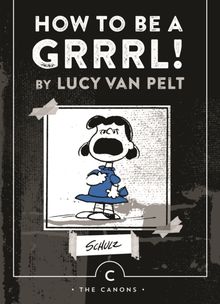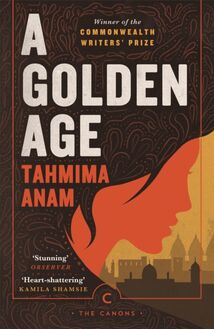Free Women, Free Men , livre ebook
189
pages
English
Ebooks
2018
Vous pourrez modifier la taille du texte de cet ouvrage
Obtenez un accès à la bibliothèque pour le consulter en ligne En savoir plus
Découvre YouScribe en t'inscrivant gratuitement
Découvre YouScribe en t'inscrivant gratuitement
189
pages
English
Ebooks
2018
Vous pourrez modifier la taille du texte de cet ouvrage
Obtenez un accès à la bibliothèque pour le consulter en ligne En savoir plus
Publié par
Date de parution
01 mars 2018
Nombre de lectures
1
EAN13
9781786892171
Langue
English
Poids de l'ouvrage
1 Mo
Publié par
Date de parution
01 mars 2018
Nombre de lectures
1
EAN13
9781786892171
Langue
English
Poids de l'ouvrage
1 Mo
Camille Paglia is the University Professor of Humanities and Media Studies at the University of the Arts in Philadelphia. A regular contributor to Salon.com, she is the author of Glittering Images; Break, Blow, Burn; Vamps and Tramps; Sex, Art, and American Culture; and Sexual Personae.
"A compilation of Paglia's best, and most incendiary, previously published essays . . . At times infuriating, at times glittering, Paglia's prose is always biting and relentless" Huffington Post
"Fiercely erudite, freewheeling and sex-drenched . . . The Helen Vendler-meets-Patti Smith grad seminar you wanted but never quite got [. . . Paglia is] a fearless public intellectual and more necessary than ever" New York Times
"Paglia is a brilliant thinker on culture and human nature . . . Inspirational in its tone and its message" Helen Smith, The New Criterion
"Her work is always thought provoking . . . Relatable and enthralling" BUST
ALSO BY CAMILLE PAGLIA
Glittering Images:
A Journey Through Art from Egypt to Star Wars
Break, Blow, Burn:
Camille Paglia Reads Forty-three of the World’s Best Poems
The Birds
Vamps & Tramps: New Essays
Sex, Art, and American Culture: Essays
Sexual Personae: Art and Decadence from Nefertiti to Emily Dickinson
FREE WOMEN FREE MEN
SEX • GENDER • FEMINISM
CAMILLE PAGLIA
Published in Great Britain in 2018 by Canongate Books Ltd,
14 High Street, Edinburgh, EH 1 1 TE
canongate.co.uk
This digital edition first published in 2018 by Canongate Books
Compilation copyright © Camille Paglia, 2017
First published in the United States by Pantheon Books, a division of Penguin Random House
Information on previous publications and illustration credits appears here
The moral right of the author has been asserted
British Library Cataloguing-in-Publication Data A catalogue record for this book is available on request from the British Library
ISBN 978 1 78689 218 8 eISBN 978 1 78689 217 1
CONTENTS
Introduction
1 Sex and Violence, or Nature and Art
2 The Venus of Willendorf
3 Nefertiti
4 Madonna: Animality and Artifice
5 Rape and Modern Sex War
6 Junk Bonds and Corporate Raiders: Academe in the Hour of the Wolf
7 The MIT Lecture: Crisis in the American Universities
8 The Strange Case of Clarence Thomas and Anita Hill
9 The Nursery School Campus: The Corrupting of the Humanities in the U.S.
10 The Return of Carry Nation: Catharine MacKinnon and Andrea Dworkin
11 A White Liberal Women’s Conference
12 Loose Canons: Review of Germaine Greer, Slip-Shod Sibyls
13 Men’s Sports Vanishing
14 Coddling Won’t Elect Women, Toughening Will
15 Academic Feminists Must Begin to Fulfill Their Noble, Animating Ideal
16 Gridiron Feminism
17 The Modern Battle of the Sexes
18 American Gender Studies Today
19 The Cruel Mirror: Body Type and Body Image as Reflected in Art
20 The Pitfalls of Plastic Surgery
21 Feminism Past and Present: Ideology, Action, and Reform
22 No Sex Please, We’re Middle Class
23 The Stiletto Heel
24 Scholars in Bondage: Review of Margot Weiss, Techniques of Pleasure ; Staci Newmahr, Playing on the Edge ; and Danielle J. Lindemann, Dominatrix
25 Gender Roles: Nature or Nurture
26 Are Men Obsolete?
27 Put the Sex Back in Sex Ed
28 It’s Time to Let Teenagers Drink Again
29 Cliquish, Tunnel-Vision Intolerance Afflicts Too Many Feminists: Interview with Deborah Coughlin, Feminist Times
30 Southern Women: Old Myths and New Frontiers
31 The Modern Campus Cannot Comprehend Evil
32 Why I Love The Real Housewives
33 What a Woman President Should Be Like
34 Feminist Trouble: Interview with Ella Whelan, Spiked Review
35 On Abortion
36 What’s in a Picture: Robert Mapplethorpe’s Portrait of Patti Smith for Horses
Illustrations
Acknowledgments
Index
Previous Publication Information
Illustration Credits
LIST OF ILLUSTRATIONS
“Woman Warrior: Sexual Philosopher Camille Paglia Jousts with the Politically Correct” by Francesca Stanfill, cover story, New York magazine, March 4, 1991. Photograph taken by Harry Benson in the armor room of the Philadelphia Museum of Art. Inspired by early Rolling Stones album covers and Robert Mapplethorpe’s portrait of Patti Smith for Horses . Violet silk shirt alluded to Oscar Wilde’s Mauve Decade. ( Harry Benson /New York Media LLC)
“Woman Warrior” by Francesca Stanfill, New York magazine, March 4, 1991. Photograph by Harry Benson of Paglia on guard with her antique ivory-handled, silver-trimmed Knights Templar Masonic sword (purchased during adolescence at an upstate New York country store) on the Rocky steps of the Philadelphia Museum of Art. The persona is defender of the arts. (Courtesy of Harry Benson )
“Controversy: Street Fighting Woman. Academic brawler Camille Paglia takes on the campus establishment,” People , April 20, 1992. Asked by People for “one shocking picture,” Paglia struck a West Side Story pose with her Italian switchblade knife in the train tunnel at Swarthmore College. ( Mario Ruiz/ Getty Images)
A rack of varied clothing was provided for a photo shoot with Steve Poole for the Daily Mail in London in January 1994. Paglia zeroed right in on a plush purple-velvet Moschino jacket adorned with gold buttons and cut in a piratical eighteenth-century style. It took a ship’s crew to get her in and out of those black thigh-high cavalier boots. (© Steven Poole )
Another photograph from the shoot with Steve Poole for the Daily Mail in London in January 1994. The clever crew turned a black shawl into a seaweed-streaming rock. (© Steven Poole )
Drawings by John Callahan, published in 1993 in Willamette Week , an alternative newspaper in Portland, Oregon. Gift of the artist. (© by John Callahan . Reprinted by permission.)
“America’s Most Influential Women: 200 Legends, Leaders, and Trailblazers,” Vanity Fair , November 1998. Vanity Fair invited Betty Friedan, Gloria Steinem, and Paglia to pose together for Annie Leibovitz. Friedan and Paglia agreed, but Steinem refused, so the magazine asked the great Robert Risko to do a group caricature. Headline: “REVOLUTIONARY.” Caption: “Friedan, Steinem, and Paglia are an influential triumvirate—just don’t put them in the same room.” ( Robert Risko )
“Attack of the 50-Foot Lesbian: Camille Paglia reigns as America’s most controversial, intellectual, and intimidating gay woman,” cover story, The Advocate , October 18, 1994. (© 1994 Here Publishing. All rights reserved.)
“Paglia 101: Confessions of a Campus Radical,” cover story, Girlfriends , September 2000. Tagline: “Nobody is going to tell me I’m homophobic, okay? I will kick their ass!” Previously published in Girlfriends magazine. Reproduced with the permission of Diane Anderson-Minshall and Heather Findlay.
INTRODUCTION
History moves in cycles. The plague of political correctness and assaults on free speech that erupted in the 1980s and were beaten back in the 1990s have returned with a vengeance. In the United States, the universities as well as the mainstream media are currently patrolled by well-meaning but ruthless thought police, as dogmatic in their views as agents of the Spanish Inquisition. We are plunged once again into an ethical chaos where intolerance masquerades as tolerance and where individual liberty is crushed by the tyranny of the group.
The premier principles of this book are free thought and free speech—open, mobile, and unconstrained by either liberal or conservative ideology. The liberal versus conservative dichotomy, dating from the split between left and right following the French Revolution, is hopelessly outmoded for our far more complex era of expansive technology and global politics. A bitter polarization of liberal and conservative has become so extreme and strident in both the Americas and Europe that it sometimes resembles mental illness, severed from the common sense realities of everyday life.
Our understanding of sexuality, a paradigmatic theme and indeed obsession of modern culture, has been clouded by its current politicization. Sex and gender have been redefined by ill-informed academic theorists as superficial, fictive phenomena produced by oppressive social forces, disconnected from biology. This hallucination has sowed confusion among young people and seriously damaged feminism. A gender theory without reference to biology is absurd on its face. But as a proponent of dynamic free will, I certainly do not subscribe to a wholesale biological determinism. As I wrote on the very first page of Sexual Personae , “Sexuality and eroticism are the intricate intersection of nature and culture.” Furthermore, my key idea is that art itself is a line drawn against nature.
My dissident brand of feminism is grounded in my own childhood experience as a fractious rebel against the suffocating conformism of the 1950s, when Americans, exhausted by two decades of economic instability and war, reverted to a Victorian cult of domesticity that limited young girls’ aspirations and confined them (in my jaundiced view) to a simpering, saccharine femininity. I have written elsewhere about my eccentric symbols of gender protest via transvestite Halloween costumes: Robin Hood at age five; the toreador from Carmen at six; a Roman soldier at seven; Napoleon at eight; Hamlet at nine. I took inspiration from wherever I could find it—from Classics Illustrated comic books and Courvoisier ads for Napoleon Cognac to the local church’s Stations of the Cross and my parents’ worn copy of Stories from the Great Metropolitan Operas .
But never in my passionate identification with heroic male figures was I encouraged by concerned but misguided adults to believe that I actually was a boy and that medical interventions could bring that hidden truth to life. On the contrary, by being forced to learn coping strategies for surviving in society, I was freed to develop my talents in other ways that have proved invaluable over time. When recently asked how I “identify” or descri














